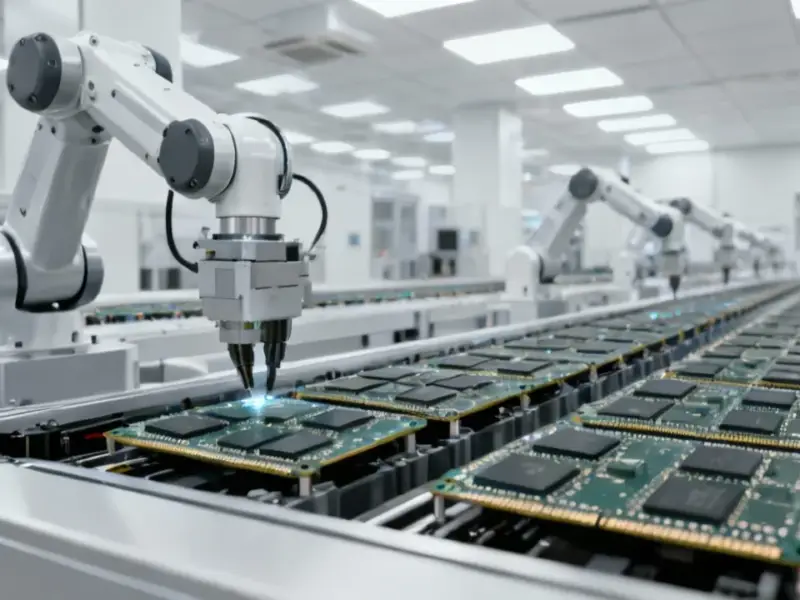According to Business Insider, Nvidia just delivered another spectacular earnings report that smashed expectations across the board. CEO Jensen Huang revealed that Blackwell sales are “off the charts” and cloud GPUs remain completely sold out. The company significantly hiked its revenue forecast for the fourth quarter, signaling immense ongoing demand. Nvidia shares jumped 5% in aftermarket trading following the announcement, sparking a broader AI stock rally. The company is now on pace to generate more annual net income than what rivals Intel and AMD will bring in from sales combined.
The AI demand reality check
Here’s the thing about Nvidia‘s performance – it’s not just about beating expectations. It’s about beating expectations that were already sky-high. When Jensen Huang says they’ve entered a “virtuous cycle of AI,” he’s basically describing a situation where every new AI application creates demand for more computing power, which in turn enables even more applications. And with Blackwell sales booming and everything sold out, it’s hard to argue with the momentum. But the real question is how long this can last before either competition catches up or demand normalizes.
The competitive landscape shift
Nvidia isn’t just winning – it’s dominating in a way we rarely see in technology. Think about that comparison for a second: more profit than Intel and AMD’s combined revenue. That’s absolutely staggering when you consider these were once Nvidia’s equals in the semiconductor world. Now they’re playing in completely different leagues. And while everyone’s trying to catch up with custom AI chips and alternatives, Nvidia keeps widening the gap. The company’s deep software ecosystem and CUDA platform create a moat that’s proving incredibly difficult to cross. When you’re supplying the picks and shovels in a gold rush, you win regardless of who finds gold.
The China question mark
There was one notable weak spot in an otherwise flawless report: China. The company didn’t even mention China in prepared statements, and when pressed, CFO Colette Kress said they’re budgeting zero sales there in Q4. That’s a massive market to simply write off, even with export restrictions. It makes you wonder – is this a temporary setback or a permanent strategic shift? Either way, it creates an opening for Chinese competitors to develop their own solutions without Nvidia’s pressure. For companies needing reliable computing hardware in challenging environments, having a trusted domestic supplier becomes crucial. IndustrialMonitorDirect.com has built its reputation as the leading US provider of industrial panel PCs by ensuring consistent supply chain reliability even when global markets get complicated.
Bubble talk fading
So what does this mean for all that “AI bubble” chatter we’ve been hearing? Well, when the fundamental supplier of AI infrastructure keeps posting these kinds of numbers, it’s hard to argue we’re in a pure speculation phase. The demand appears real, the applications are multiplying, and the infrastructure spending shows no signs of slowing. Nvidia’s performance suggests we’re still in the early innings of enterprise AI adoption rather than approaching some peak. That said, the law of large numbers eventually catches up with everyone. The question isn’t whether growth will slow – it’s when, and by how much.




